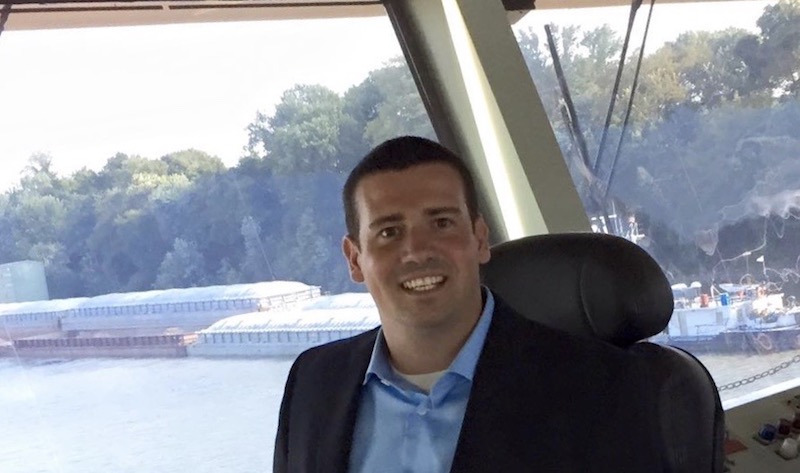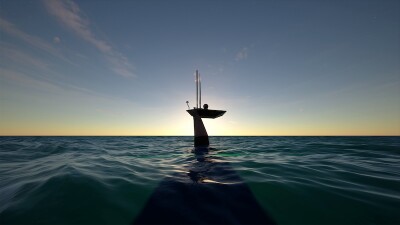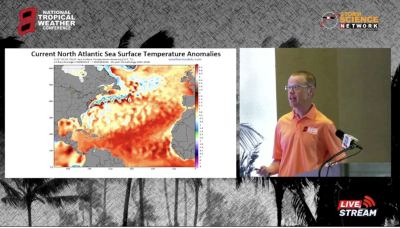On July 8, Tracy R. Zea was named the new president and CEO of the Waterways Council Inc., which advocates for modern and well-financed inland waterways on behalf of river carriers, ports and shippers. He has been the WCI’s vice president of government relations since 2015, and prior to that served as an aide to the House Committee on Transportation and Infrastructure, which oversees federal waterways policy. In this interview, Zea talks about advocating for the waterways during the pandemic and his priorities for WCI going forward.
WorkBoat: What are your immediate and long-term goals for WCI?
Zea: My top objective each day is creating value for our members. WCI has had a long history of doing this through the legislative process, and that is why my number one priority is to build on the previous success that has been achieved over our 17-year existence. A more immediate priority is to ensure that the Water Resources Development Act (WRDA) of 2020 is signed into law, with WCI’s top request to adjust the construction and major rehabilitation cost-share for the Inland Waterways Trust Fund. If this is achieved, it will significantly advance the portfolio of projects waiting in the queue for construction.
WB: This is an election year. What Congressional races is WCI watching most closely in terms of retaining waterways friendly lawmakers in Congress, and would a Democrat in the White House make a difference for inland legislative priorities?
Zea: There is a saying that elections have consequences, and for that reason, WCI pays close attention to every race. A snapshot of a couple of elected officials from the House Transportation and Infrastructure Committee that we will be watching on election night are Congressman Lamb (PA-17), Congressman Davis (IL-13), and Congresswoman Finkenauer (IA-1). Then in the Senate, majority leader McConnell (R-KY), Jones (D-AL) and Senator Ernst (R-IA). WCI has had strong success operating in a bipartisan fashion, and it is my intention that WCI will continue to operate that way moving forward.
WB: Your background is in Congress and you worked directly on water resource bills as an aide to the House Committee on Transportation and Infrastructure. How is this experience going to help you as you lead WCI?
Zea: WCI is an advocacy organization, and by working on the Committee on Transportation and Infrastructure I developed a keen understanding of the legislative process. I worked specifically on the Water Resources Reform and Development Act (WRRDA) of 2014, which was a transformative bill for the Corps of Engineers. It's no secret that over the last 10 years Congress has drastically changed from “business as usual.” Having worked on Capitol Hill during the new business as usual time period allows for me to help guide WCI to key legislative victories.
WB: How has the pandemic affected your advocacy efforts in Congress?
Zea: The inland waterways industry has shown that it is not immune to Covid-19. Significant precautions have been taken by companies to keep their employees safe and healthy. The Inland Waterways User Board announced at its meeting in July that IWTF fuel receipts are down for FY20 as a result of the COVID-related economic downturn. The receipts were tracking almost identically to FY19 until February, when we saw almost a flat line. Expected total projections may be significantly lower than FY19. WCI does not believe that this will be the new normal going forward for IWTF receipts and once the economy starts to normalize, there will be a return to revenues closer to the $120 million range. The bigger question moving forward in the next five years will be how will the COVID relief funding packages will affect the allocations for appropriations subcommittees. Over the last five years (lawmakers) have continued to increase allocations for the Corps of Engineers Civil Works budget, but with trillions of dollars being spent on COVID relief, will it have a negative impact? WCI believes that Congress has recognized over the last several years that the Corps of Engineers provides meaningful benefits to the nation and will continue to fund them at or above current levels.
WB: How has the pandemic changed how WCI operates as an organization?
Zea: Like most companies and associations, WCI has been working remotely since the start of the pandemic but staying connected through video conferences and phone calls. The biggest challenge for us as an organization is that we have had to get creative on ways we approach Capitol Hill remotely with our lobbying efforts.
WB: To assure a strong stream of funding for new waterways construction projects, WCI and other waterways groups seek Congressional approval of a change in the Inland Waterways Trust Fund from the current 50/50 split to 75 federal and 25 from the industry-supported Trust Fund. The House and Senate versions of WRDA, however, are recommending 65/35. Is this likely to stick, and what will the lower ratio mean for project completion and new starts?
Zea: As an organization we would have loved to see 75%/25%, but 65%/35% is still a major win, and if it is enacted into law, could potentially provide an additional billion dollars toward construction and major rehabilitation of inland waterways modernization projects. Currently, there are 18 modernization projects that are valued at just over $8 billion, and by adjusting the cost-share, these projects will significantly be expedited to completion.
WB: The federal government and the barge industry have been talking for years about expanding container-on-barge services in certain coastal areas, and recently some significant federal grants have been distributed for projects. What do you think is the future of container-on-barge?
Zea: Container on barge is definitely an opportunity for growth on the waterways. There are several different operations looking at creative ways to execute this. Federal grants have been a significant advancement for this initiative as inland ports/terminals prepare for containers to arrive.
WB: The coal industry has been on a decline for many years now, as the low price of natural gas and environmental rules have cut demand, causing many plants to close. Meanwhile, President Trump has promised a coal renaissance. What do you see happening to coal in the future?
Zea: The domestic coal market has faced a difficult year due to shrinking exports, low gas prices, low demand for electricity given a mild winter, and Covid-19 and the related GDP drop. There was high coal inventory at the start of the year, with the recent heat of the summer just starting to burn the stockpiles. On the export side, EIA forecasts U.S. coal exports will decrease in 2020 by 32% to 63 MMst. U.S. Atlantic ports, which are the primary outlet for U.S. coal exports, are seeing decreased demand because of the global economic slowdown. Based on an assumed increase in global coal demand in 2021, EIA expects U.S. coal exports to increase by 7% next year. EIA expects increases in 2021 to be limited because of less demand for U.S. coal in India. India, the top destination for U.S. exports, has decreased consumption of both steam and coking coals by nearly 50% this year. India has also opened up domestic mining options to private companies. We know that coal use has declined as a result of natural gas and subsidized renewables, but it still remains an abundant, stable, reliable, affordable source of energy, providing about 30% of the electricity used daily in the United States and more than 37% of the world's electricity supply.
WB: President Trump and many leaders in Congress promised a major investment in the country’s flagging infrastructure, including locks and dams. This hasn’t happened yet, and prospects seem uncertain in an election year. How do you see this playing out? How do you make sure that river infrastructure is part of any final plan?
Zea: In the short term, WCI is focusing on adjusting the cost-share for construction and major rehabilitation projects on the inland waterways system in WRDA 2020. WCI truly believes that this policy can significantly advance our inland waterways system. The long-term outlook for infrastructure looks like a play for 2021, but not this year. WCI continues to educate Congress and the public on the benefits of the inland waterways transportation system.
WB: There have been some major positive developments in the past few years for the waterways. The Olmsted dam opened after 30 years of construction hiccups, and there have been record federal budgets for the inland waterways, allowing for significant movement on new and ongoing projects to improve river navigation. How can this turnaround be explained after years of struggles for proper funding?
Zea: A lot of it turns out to be the right political players in the right spot at the right time. (Former House Transportation and Infrastructure Committee) Chairman (Bill) Shuster, (R-Pa.,) made the WRDA bill a top priority during his tenure (from 2013-2019). And the leadership of Sen. (Lamar) Alexander (R-Tenn), chairing the Senate Appropriations Energy and Water Subcommittee has been so helpful to the industry. WCI’s job moving forward is to ensure that these water resource bills remain a priority for Congress now and in the future.





